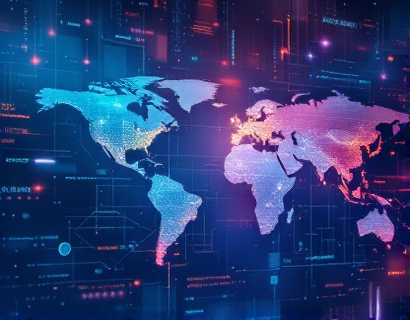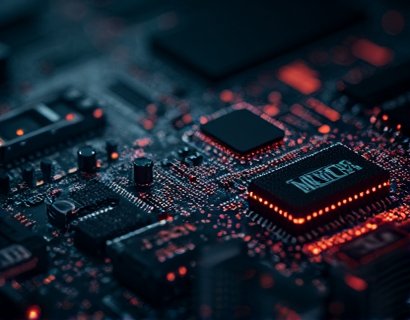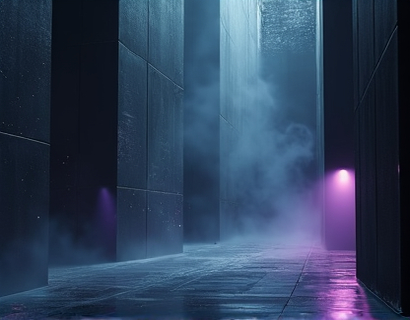Revolutionizing Memorial Creation: AI and Blockchain for Secure and Personalized Online Tributes
The loss of a loved one is one of life's most profound and painful experiences. In an era where digital presence and online remembrance have become increasingly significant, the need for innovative and secure methods to create and maintain online memorials has never been more critical. This article explores how the integration of Artificial Intelligence (AI) and blockchain technology is transforming the way we honor and remember our dear ones, offering a new paradigm in memorial creation that is both secure and deeply personalized.
The traditional approach to memorial creation often involves physical monuments or digital platforms that lack the security and personalization needed to truly honor the deceased. These platforms can be vulnerable to data breaches, loss of information, and lack the unique touch that makes a memorial truly reflective of the person being remembered. Enter a pioneering platform that harnesses the power of AI and blockchain to revolutionize this process, providing a solution that is not only secure but also deeply tailored to the individual's life and legacy.
Understanding the Technology: AI and Blockchain
AI technology brings a level of personalization and efficiency to memorial creation that was previously unattainable. Through machine learning algorithms, the platform can analyze and curate content such as photos, videos, messages, and other memorabilia to create a comprehensive and dynamic tribute. This content curation process can include sentiment analysis to ensure the memorial reflects the personality and spirit of the deceased, making the experience more meaningful for those who visit.
Blockchain technology, on the other hand, offers unparalleled security and permanence. By storing memorial data on a decentralized ledger, the platform ensures that the tribute is immutable and resistant to tampering or loss. Each piece of content added to the memorial is recorded as a transaction on the blockchain, creating a transparent and verifiable history of the tribute's creation and evolution over time.
Secure Memorial Creation
The security of online memorials is paramount, especially considering the sensitive nature of the content they hold. Traditional platforms often struggle with data breaches and unauthorized access, leading to the loss or misuse of personal and sentimental information. The AI and blockchain integration addresses these concerns head-on.
AI-driven security measures continuously monitor the platform for any suspicious activity, using advanced algorithms to detect and prevent unauthorized access. Meanwhile, blockchain's inherent security features, such as cryptographic hashing and consensus mechanisms, ensure that once data is recorded, it cannot be altered or deleted without leaving a trace. This dual-layered security approach provides users with peace of mind, knowing their loved one's memory is safe from breaches and misuse.
Personalized Tributes Through AI
One of the most compelling aspects of this platform is its ability to create highly personalized tributes. AI algorithms analyze the uploaded content to identify themes, emotions, and key moments in the deceased's life. This analysis can then be used to generate a narrative that flows logically and emotionally, creating a cohesive and heartfelt tribute.
For instance, the platform can automatically compile a timeline of significant events, from birth and milestones to favorite quotes and memories shared by family and friends. AI can also suggest additional content, such as relevant music or poetry, that resonates with the deceased's personality. This level of personalization ensures that no two memorials are alike, each one a unique reflection of the individual being honored.
Community and Sharing
Memory is often a shared experience, and this platform recognizes the importance of community in the grieving process. AI facilitates the creation of virtual spaces where family and friends can gather, share memories, and offer support to one another. These spaces can be moderated to ensure a respectful and healing environment, with AI tools helping to manage and curate the content shared.
Users can also choose to make certain parts of the memorial public, allowing broader family and friend networks to pay their respects and contribute their own memories. This feature not only helps in preserving the deceased's legacy but also provides a sense of connection and support to those who are grieving.
Blockchain for Legacy Preservation
The use of blockchain in this context extends beyond security to legacy preservation. By storing the memorial on a blockchain, the platform ensures that the tribute remains accessible and intact for generations to come. Unlike traditional digital storage solutions that can become obsolete or fail over time, blockchain provides a permanent and reliable repository for the memorial.
Each update or addition to the memorial is recorded as a new block in the chain, creating a chronological and tamper-evident record of the tribute's evolution. This not only preserves the integrity of the memorial but also provides a historical document that can be passed down through families, serving as a valuable resource for future generations.
User Experience and Accessibility
The platform is designed with the user in mind, ensuring an intuitive and accessible experience for all. Whether a user is tech-savvy or not, the interface is crafted to guide them through the memorial creation process step by step. AI-powered chatbots and virtual assistants are available to answer questions, provide guidance, and assist with any technical issues that may arise.
For those who may not have access to advanced technology, the platform offers multiple access options, including mobile apps and web versions optimized for various devices. This ensures that anyone, anywhere, can create and visit a memorial with ease, fostering a global community of remembrance and support.
Ethical Considerations and Privacy
In the development and implementation of this platform, ethical considerations and user privacy are of utmost importance. The integration of AI and blockchain must be done in a way that respects the privacy and wishes of both the deceased and their loved ones. Data encryption and strict access controls ensure that only authorized individuals can view and interact with the memorial content.
The platform also provides clear guidelines and options for users to manage their data, including the ability to control who can access the memorial and what information is shared. This level of control empowers users to maintain the dignity and privacy of the tribute, aligning with their values and preferences.
Case Studies and Real-World Impact
To illustrate the impact of this technology, consider the story of a family who used the platform to create a memorial for their beloved grandfather. Through AI, they compiled a comprehensive timeline of his life, from his early years to his achievements and the moments that defined his character. The blockchain ensured that this tribute would remain secure and accessible for future generations.
The family was able to include video messages from relatives around the world, creating a rich and multifaceted tribute that captured the essence of their grandfather's life. The virtual space they created became a place of comfort and remembrance, where they could gather, share stories, and find solace in each other's company. This real-world example demonstrates the profound impact such a platform can have on the grieving process.
Future Developments and Potential
The integration of AI and blockchain in memorial creation is just the beginning. Future developments could include advanced AI features such as virtual reality experiences, allowing users to create immersive environments that replicate places meaningful to the deceased. Blockchain technology could also be expanded to include decentralized funding models for maintaining and enhancing memorials, ensuring their longevity and continued relevance.
Moreover, the platform could integrate with other digital services, such as social media and cloud storage, to create a seamless and comprehensive digital legacy management solution. This would not only enhance the memorial experience but also provide a holistic approach to managing and preserving digital assets in the aftermath of a loss.
As technology continues to evolve, the potential for AI and blockchain in memorial creation is vast. The key is to harness these technologies in a way that honors the deceased while providing meaningful support to those who grieve, creating a new standard in online remembrance.










































